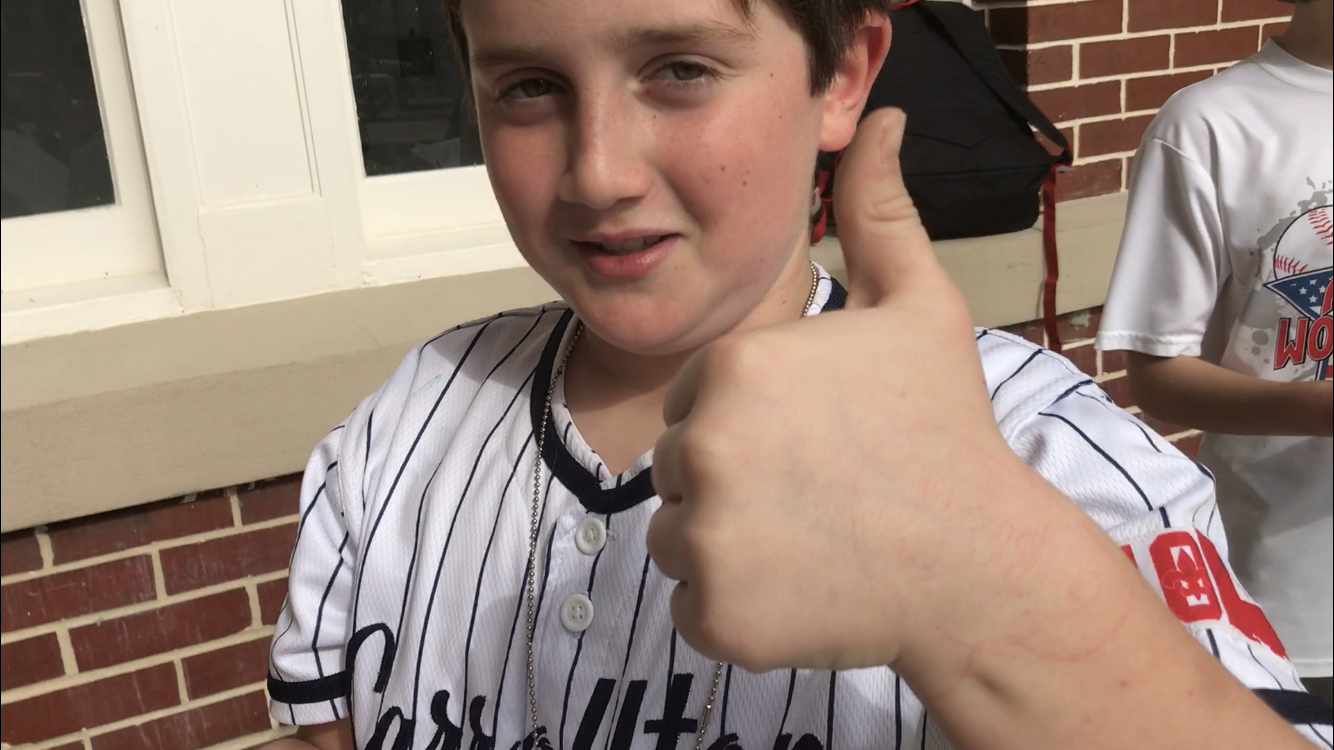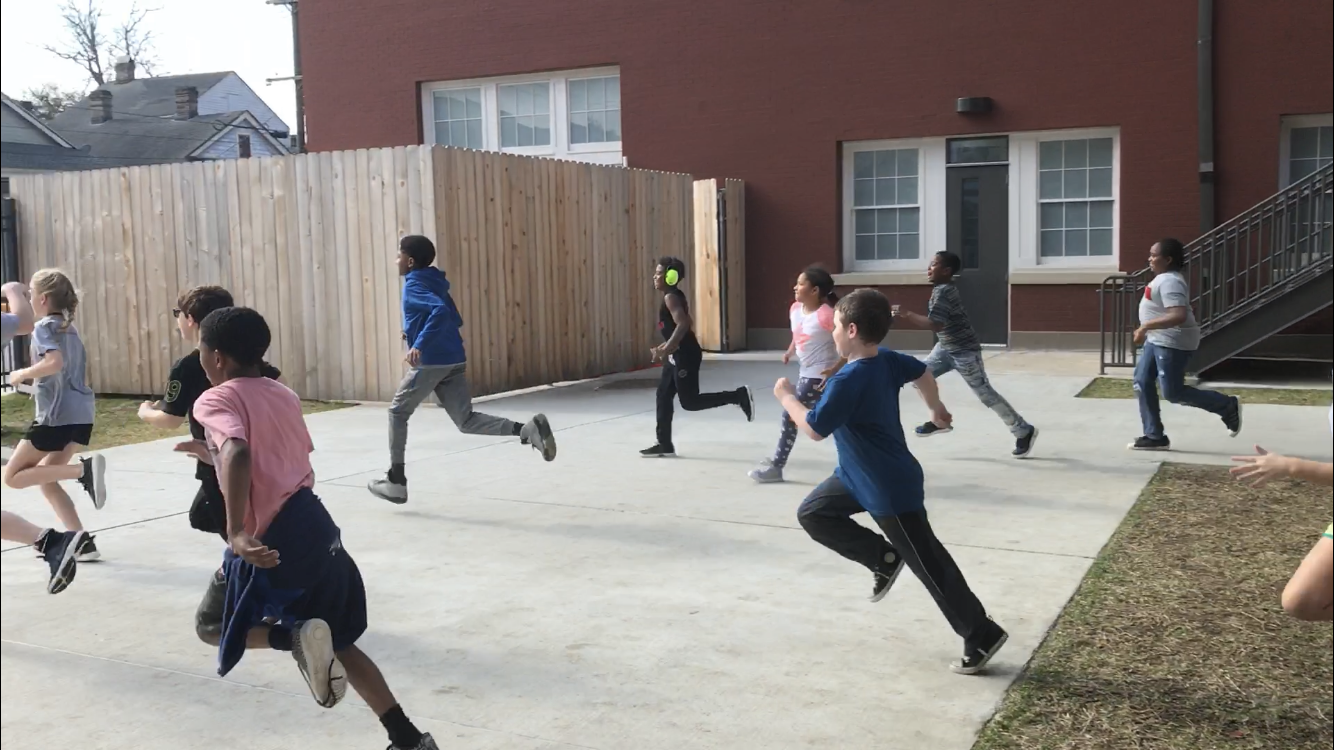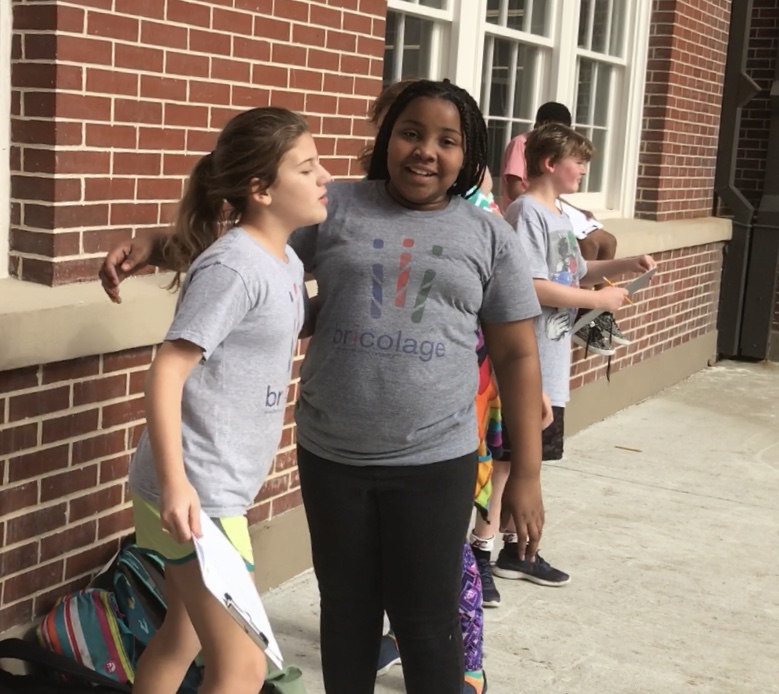Running Dictations: Power in Pairing & Extensions
My second ever teaching blog was on “sprinting dictation” way back in July 2016! We did another running dictation this week and I thought I would share some new classroom videos and talk about pairing and extensions I do to scaffold it for all the learners in your classroom.

This week was Wooly Week 2019. I did a modified Wooly Week, dipping my toes into the many wonderful things Jim, Nate, and his team planned for their subscribers (OH MY GOSH they did so much….) This felt weird for me because normally I go ALL IN for Wooly Week, but I am 8 months pregnant right now, exhausted, and my kids don’t know any different so my ALL WOOLY plans kept them happy as we dabbled with some of the awesome new additions they created for us.

5th graders worked with the song “pan” all week. On Thursday, I wrote up a novice level story to go along with the video. (You don’t have to write these yourself if you don’t want to because there are stories provided in the pro subscription to the website!) The “al entrar” or do now was different from usual, and students entered the class and were just asked to “read” the Spanish story on the TV silently. That was a preview to what they’d be reading during the running dictation.

Modeling is CRUCIAL. Since it as my student’s first ever running dictation, I asked for a volunteer and picked someone who was animated and of higher proficiency level in each class so I could slowly give all my instructions in Spanish with them modeling at my side. I gave the volunteer a clipboard, a paper with 15 lines on it, and a pencil. Then, I counted down as “Maestra”, (3, 2, 1) and RAN to the other side of the room where I had a sentence taped to the wall. I modeled reading that sentence to myself then RAN (yes, 8 months pregnant… model what you want to see) back to my partner, and told them the sentence IN Spanish, exactly as I had read it but I “forgot” a couple of words so I could model that not only is that OK, but highly likely, and I modeled running back for the rest of the sentence. Next half way through running back to my partner, I put my Maestra voice back on and yelled “CAMBIA” (change) and took the clipboard from my partner and the student then ran to the wall. This is why it is important to choose a student who will know what you want them to do without much pre-direction. I asked for students to review the instructions in English (since they’d heard them in Spanish) with their shoulder partner for 20 seconds, then I asked one student in each class to sum up the activity in their own words quickly. Just to make sure everyone understood.

Next, I posted the pairs students would work in on the TV. Pairing is super important. I was very intentional (and yes it took a good 10 minutes of prep to think about it for each class) about pairing students with someone of their same/close proficiency level and then I had to double check that they were students that wouldn’t have conflict. At this point in the year (February) we have built a pretty strong classroom community and culture, but I know that there are still some pairings to avoid. I paired my students who need reading support and accommodations together so that I could stand by the sentences on the fence to help them decode. When students who are of Novice high proficiency are paired together, they’re likely to finish faster so you’ll need to have extension activities or ideas ready. Read on for what I do for those…

Each pair grabbed a clipboard, TWO papers, and pencil and we went outside. When I was on a big campus last year I used to spread the sentences out all over the place. On benches, on trees, on rocks, and on fences. This year, I taped the sentences along a fence at the end of a big courtyard so students had to sprint in one direction rather than all over the place. The sentences didn’t contain any “new” words that they’d not yet acquired… I chose to print 15 sentences of manageable length. It is important that students understand they only have to WRITE the sentences on ONE paper, so as they trade off, they don’t have to switch to the other paper they brought outside. If you have an odd group of three instead of two, have ONE runner and TWO writers…like these guys…

Students line up against the wall and then I count them down and the “runner” starts. Here is a video of the first 4 minutes of one of my classes.
Here is another class where you can see me supporting a student with reading at the fence.
It is super important to monitor student’s levels of “exhaustion” to yell “switch” or change at the right time. CONSTANT praise, encouragement, circulation and feedback should be happening too.. Remind students that they don’t HAVE to run… You’ll hear me do that too. Here is mid way through a class:
Around 50 seconds through the video above you can see one of my teams are finished with the sentences. The first “extension” I give them is to take the sentences, and sequence them. They have to write them in the correct order on the other page they brought outside. Since the sentences were taped up in a random order on the fence and they were running and reading randomly, they have to re-read what they wrote to find out how the sentences create a story…. This also allows the other teams to keep collecting the sentences and makes sure everyone is still “getting input”.

There are many things you could do for further extensions… and not EVERY team will do every extension. YOU decide when to stop things, review things, or move everyone on. You could:
- Have students write an alternate ending to the story
- Have students circle all the verbs (high frequency words) in the story
- Find the changes in the story (I often will use a class story that we created earlier in the week for the running dictation and I will change details like the food items, or names of characters or places) so students will have to find those
- CHANGE the details in the story and rewrite it… that is if you kept the story the same from what you did in class and now the students are charged with changing the details
When I felt like it was time for some novelty, I told EVERYONE in the class to freeze. About half of the students were on some sort of “extension” activity, and half of the pairs were wrapping up the first part of the running dictation. I told all the students that there were 10 pictures (screen shots) of the video Pan taped up along the fence too. (In two of the classes I did this WHILE students were running, and in one of the classes I had them pre-taped up with the sentences). On the OTHER side of their papers where they’d been writing, were 10 Spanish sentences which matched up with the pictures. Each sentence had a line next to it. I told them one student would run and look at an image and its number, then run back and tell their partner a description of the photo and its number to their partner. Then the partner is charged with reading the sentences in Spanish and deciding which sentence best fits the photo description, and then writing the # of that photo next to the sentence. Could you make this an extension rather than a “whole group” activity? YES! Absolutely. Make sure you are still yelling “cambia” to change the runner and the reader here… Are students describing the photo in English or Spanish… Obviously you want to push for Spanish but will they all do it at a novice level, probably not and it is hard to police… what is important is that they are still “reading” in Spanish.
At the end of class, I gathered everyone together and we “checked” our work with the picture match up. I read the sentences out loud and students told me what number they wrote down. Here is a video of that:
Don’t forget to use your kiddos as resources…. I had one student collect clipboards, one student collect pencils, one student collect papers, and another was in charge of taking the sentences AND tape off of the fence (for that job choose a student who is responsible enough to not leave any tape behind). Why do I take the sentences down between classes? Unfortunately, I’ve learned from the past, that if the sentences are in an area where there is student traffic of any kind that you won’t see, or supervise, the sentences will be ripped or disappear… Better to just take them down and tape them back up before the next class. A huge time saver is to pre-tape the sentences and have them taped to your clipboard where you keep a list of the pairs or your roster, so that it is quick to transfer them to the fence rather than taping as you go when you bring a class down 🙂
I hope that this motivates you to try a running dictation if you haven’t before, or do one again if it’s been a while! 🙂
Until next time,
Happy Teaching!
Love,
La Maestra Loca


Thank you for sharing! I have done running dictation before but using a short paragraph, I like the idea of posting the sentences randomly and then having them put them in order. This not only works as an extended activity for students who work faster but it also helps the student that might take longer to process by visualing one sentence at a time.
exactly! and students with any sort of reading challenge on their IEP would definitely be overwhelmed with a paragraph! I think your students will feel really successful with this and it will feel like a “novel” change too! YAY
Do you have an alternate idea with pictures instead of sentences?